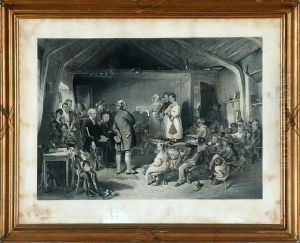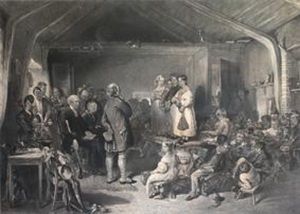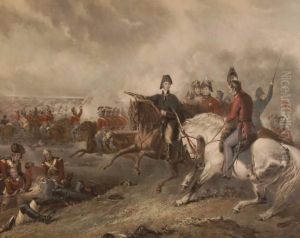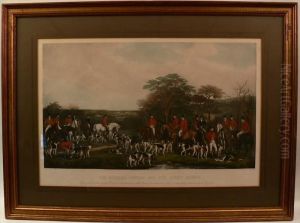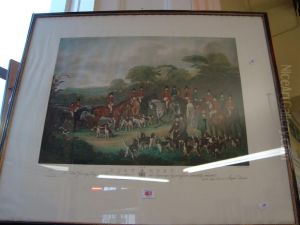Frederick Bromley Paintings
Frederick Bromley was an English engraver born in 1835. He was part of the Bromley family of engravers, which included his father, William Bromley, and several of his brothers who also pursued careers in the same field. Engraving was a prominent form of art reproduction during the 19th century, allowing for the mass distribution of artworks, and the Bromleys were well-known contributors to this craft.
Frederick Bromley's works were primarily mezzotints, a form of engraving that allowed for subtle gradations of tone and a rich palette of blacks and greys, making them particularly suitable for reproducing the dramatic light effects found in paintings. His subjects often included portraits, literary scenes, and copies of popular paintings of the time.
Not much is detailed about Bromley's personal life, but his career was marked by collaborations with various painters whose works he translated into engravings. He exhibited his works at the Royal Academy in London, starting from the 1850s, which was an important venue for artists at the time.
Bromley's artistry was characterized by a high level of skill and attention to detail. His engravings were appreciated for their fidelity to the original paintings and were sought after by art collectors and the general public who desired to own copies of famous artworks.
Despite the prominence of the Bromley family in the engraving world, the advent of photographic processes and changes in the art market eventually led to a decline in traditional engraving. Frederick Bromley's career, like that of many engravers of his time, faded as the 19th century drew to a close.
Frederick Bromley died in 1891. While he and his family's works are less known today, they remain of interest to historians of printmaking and to collectors of Victorian engravings. His contributions to the field of engraving are part of the rich tapestry of 19th-century British art history.

